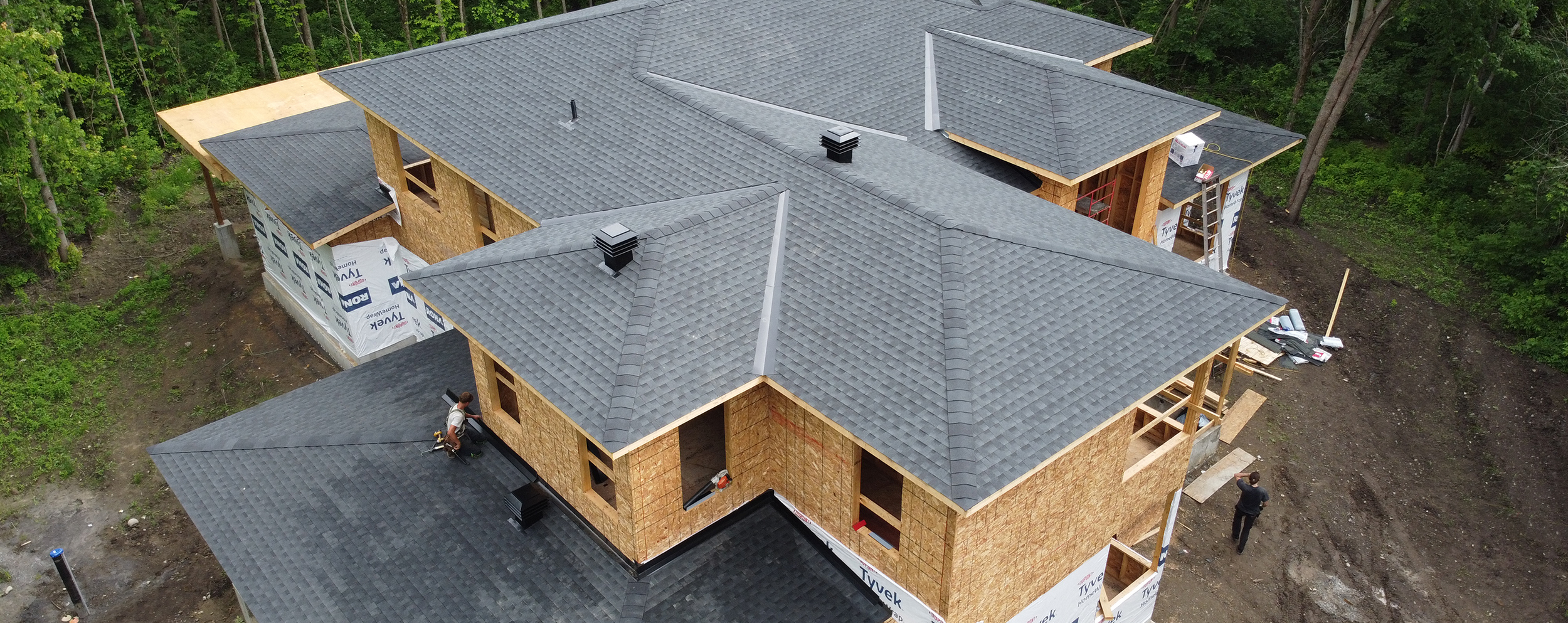FAQ
You’re not alone if you have questions about roofing. Here are some of the frequently asked questions we receive from our customers:
1. What is at the base of a roof?
This is the same question as “What makes a good roof?” The best roofing is not based solely on the shingles or tiles or metal sheets. It all comes down to the substrate. In order for a roof to withstand forces of nature, you need the roof deck to be secure, thick, and held in place with solid fasteners. For some materials, you need to ensure that the substrate is smooth and not susceptible to certain weather conditions.
For example, a plywood roof deck may move under the load of winter snow. When that happens, materials can become brittle and torn—and that leads to problems.
2. What are the signs that I need a new roof?
There are many signs that tell you it is time to replace your current roof. And you can often see the signs with a glance. For example, if you look up to the roof and see battered gutters, curling shingles, moss, and some debris collected in the valleys, you know there is a problem. If gutters are clogged, the water could be seeping into the underlayment. Moss growth means moisture retention on the roof, leading to potential leaks. Debris does the same. If you see any sagging or ponding water, it could mean that the internal structure is starting to break down. Rusted flashings point to minor leaks.
Roofers also look at the stains on the roofing materials, how the chimney cap sits on the chimney, moisture built up around the skylight, and many other places in search of problems. Be sure to call in a professional whenever you notice missing or damaged shingles or tiles or something else that like it could cause serious damage.
3. Should the roof be stripped completely or built over?
There are pros and cons to covering an existing roof versus complete removal. Many older buildings have wooden decks, which are vulnerable to rot throughout the years. In the event the roof deck has been damaged, warped, or deteriorated, the entire roof is going to have to be replaced. You wouldn’t know that such damage exists unless you remove the current roof and take a look. So, if you built over an existing roof, you could be missing those issues entirely.
If you want to discuss the potential of building over your current roof rather than getting a complete removal, it is best to discuss the conditions of your roof with a reputable roofing contractor. They will be able to do an inspection to see if it’s plausible.
4. When should I replace my current roof?
The lifespan of roofing materials depends on the type of materials, the pitch of the roof, sun exposure, and how much maintenance the roof receives. Most asphalt shingles will last between 12-20 years. Other types like metal might last between 30-50 years.
5. Why do I need to remove snow from my roof?
Eastern Ontario and Ottawa are within the snow belt, meaning that there are some months when the roads and roofs are covered in white. You don’t want those heavy loads of snow staying on your roof for too long. Here are some reasons why:
- When heat rises into the attic, it could cause melting, forming ice dams.
- Shingles are not designed to hold water, especially the amount of water released from a melting ice dam. When ice thaws, the water could seep in between the cracks and under the shingles, right to the underlayment.
- Flat roofs may collapse under the weight of heavy snow.
No one wants water damage in their home, so it is crucial that you get snow off your roof before it transforms into a massive ice dam.
6. How long does a roof installation generally take?
The time it takes to install a roof revolves around a couple of factors. First, it depends on how many employees are available. The more hands working on the project, the faster it goes. Other things to consider include the weight of the materials, the size of the roof, the weather, and any repairs that have to be done along the way. With all that in mind, a roofing installation or replacement could take 1-3 days.
7. How much does installation generally cost?
The cost is dependent on a few factors: the price of the materials, the size of the roof, the cost for labor, and any additional repairs or modifications that have to be done. If you are going with asphalt shingles, the cost may range between $5,000 – $40,000, though this could vary with different considerations.
8. What different roofing materials are there?
Classic Roof currently installs asphalt shingles, metal roofing, tile roofing, skylights and gutters.
9. Does a new roof come with a warranty?
Yes, the materials we use include a warranty from the manufacturer. Also, our installations come with a workmanship warranty.
10. Does new roofing include new gutters?
Yes, your roofing job definitely can include gutters /eavestroughing.
11. Should I try DIY roofing?
We do not usually recommend DIY solutions for roofing unless you are already skilled in the trade and the proper tools and training. It is better for you to handle things like touch-ups and caulking around windows. The one reason we do not recommend DIY is that it could potentially void your warranty if the materials are not installed by a professional.
12. What happens if there is inclement weather during the installation?
We prepare for the storm by sealing off the exposed roof with waterproof materials. The installation will continue once the inclement weather has passed.

